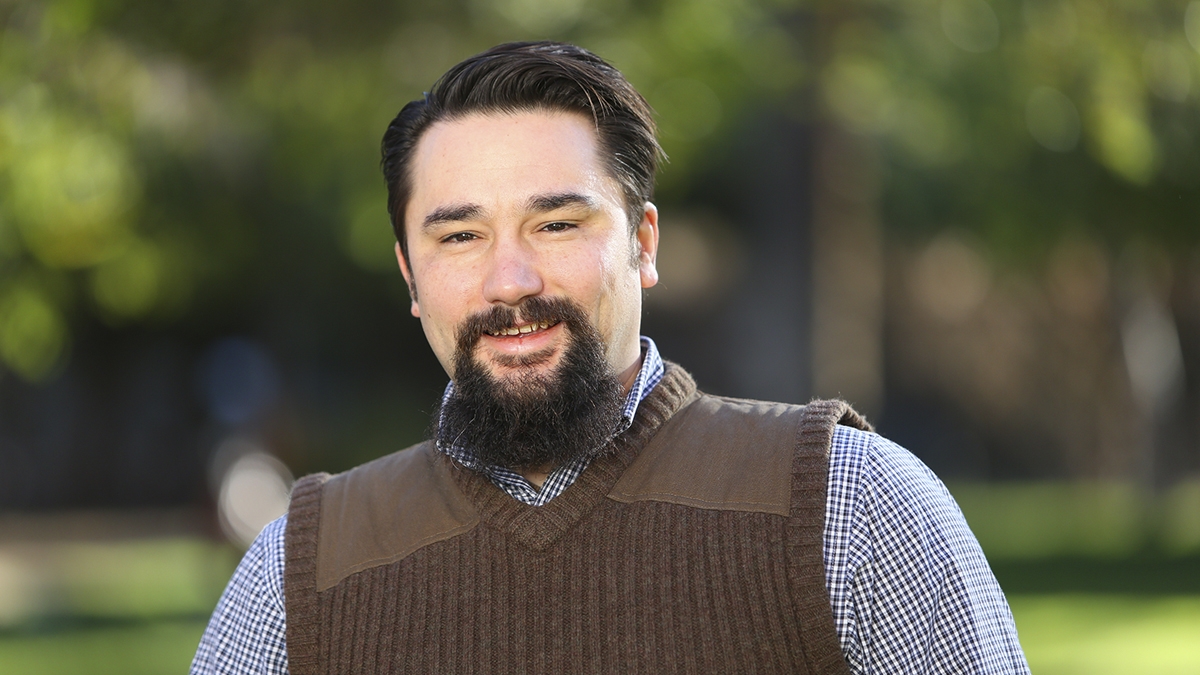ASU researcher Gary Moore exemplifies scientific leadership through energy research

Associate Professor Gary Moore
Arizona State University Associate Professor Gary Moore and his research team seek to understand and advance the science of molecular materials for applications in transducing solar energy. The biological process of photosynthesis, which converts sunlight into chemical energy stored as molecular bonds, provides inspiration and design guidance for Moore and his research team.
“The materials developed in my group’s laboratories resemble components of biological systems that carry out analogous chemical processes,” said Moore, who is part of the School of Molecular Sciences.
Moore brings extensive research experience to ASU. Before being hired as an assistant professor at ASU, he performed research as a staff scientist at Lawrence Berkeley National Laboratory, working with the Obama-era Department of Energy Innovation Hub for Artificial Photosynthesis, the nation’s largest-ever research program dedicated to developing artificial solar-fuels generation.
At the School of Molecular Sciences, Moore is building on a rich history of research and accomplishment in the areas of natural and artificial photosynthesis and photochemistry. His work contributes to the efforts of the ASU Center for Bioenergy and Photosynthesis (formerly the Center for Study of Early Events in Photosynthesis) and more recently, the Center for Applied Structural Discovery.
“We seek to demonstrate innovative research at the frontiers of science and technology,” Moore said. “To deliver scientific discoveries and important scientific tools that will transform our understanding of nature and advance the energy, economic and national security of the United States.”
Moore has earned national recognition as an emerging leader in the field of energy materials science. He is a Department of Energy Early Career Awardee, a Camille Dreyfus Teacher-Scholar, a National Science Foundation CAREER Awardee, and was recognized as an “outstanding chemist with Native American heritage” by the National Science Foundation during the 2020 Celebration of Native American Heritage Month. He was also selected to give emerging junior faculty research talks at the 2018 Electron Donor Acceptor Gordon Research conference, the 2017 Photochemistry Gordon Research Conference, and the second International Solar Fuels Conference. More recently, Moore co-organized the 2021 Western Photosynthesis Conference and the 2020 Inter-American Photochemical Society (I-APS) Conference.
“Gary is emerging as a real leader and a force in the field of photocatalysis for real-world applications,” said Ian Gould, School of Molecular Sciences interim director. “He is building hybrid, multifunctional nanoscale materials that combine multiple functions in most imaginative ways. He is extending the boundaries in several scientific areas critical to advancing technology, including interfacial chemistry, energy conversion chemistry and the catalysis of industrially important fuels and basic materials for energy and manufacturing.”
More Science and technology

ASU-led space telescope is ready to fly
The Star Planet Activity Research CubeSat, or SPARCS, a small space telescope that will monitor the flares and sunspot activity…

ASU at the heart of the state's revitalized microelectronics industry
A stronger local economy, more reliable technology, and a future where our computers and devices do the impossible: that’s the…

Breakthrough copper alloy achieves unprecedented high-temperature performance
A team of researchers from Arizona State University, the U.S. Army Research Laboratory, Lehigh University and Louisiana State…

